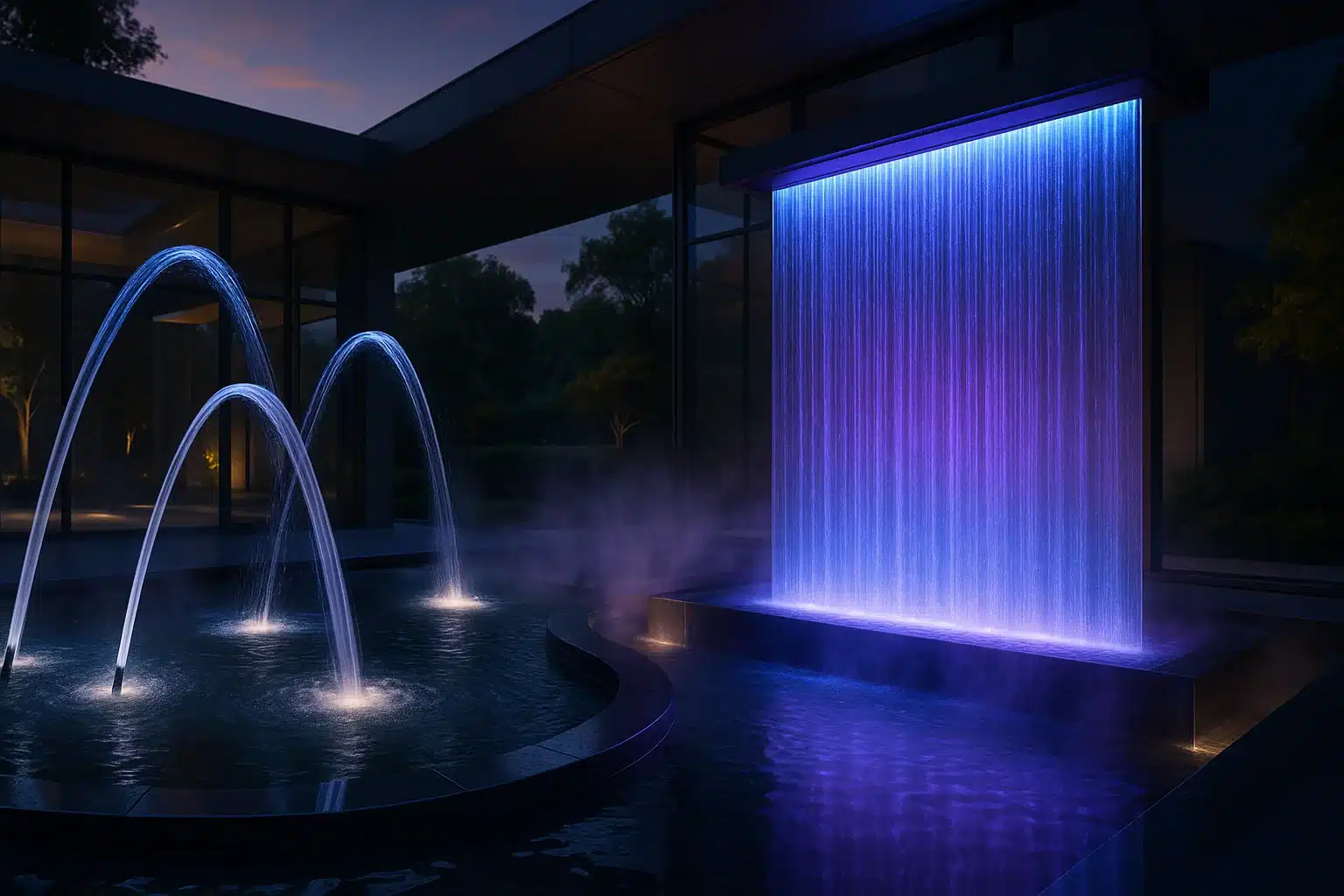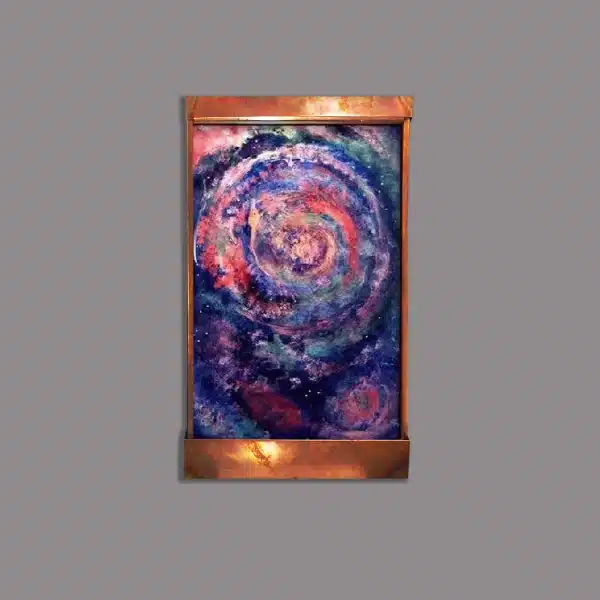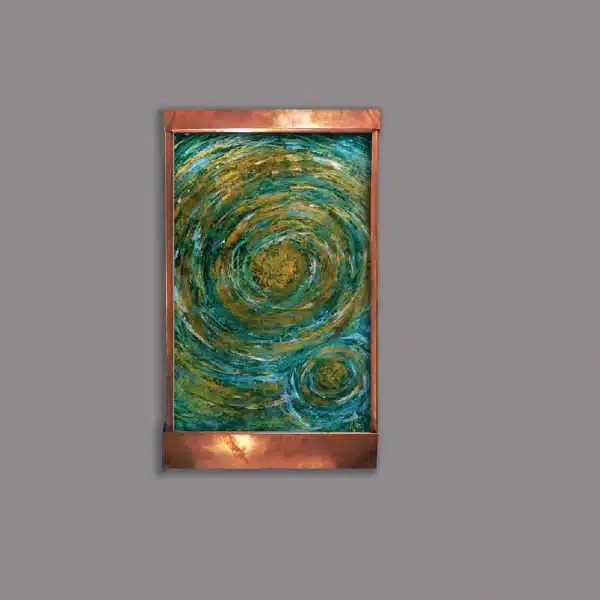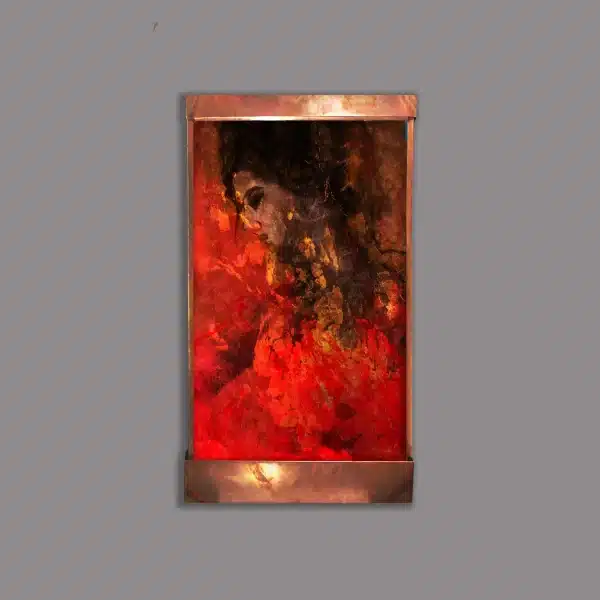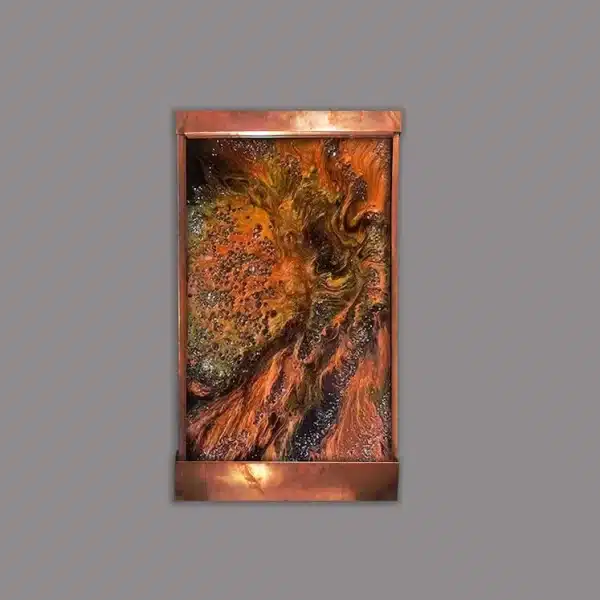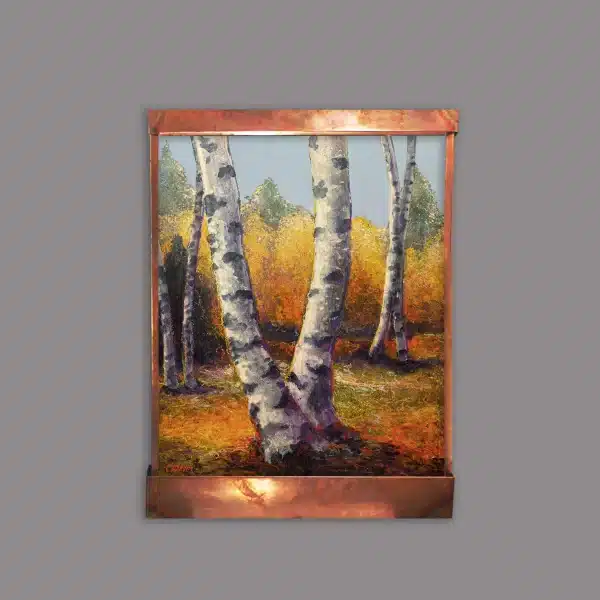Introduction: A New Era of Fountain Design
For centuries, fountains have been more than functional water sources. From the grand marble garden fountains of Renaissance Italy to the serene tabletop fountains adorning modern interiors, water has always captivated the human spirit. But in today’s fast-paced world, designers, architects, and homeowners are pushing the boundaries of what water features can achieve.
Enter the age of multi-sensory fountain installations—a fusion of design, technology, and nature that engages sight, sound, touch, and even scent. These experiences are not limited to monumental city squares; they are transforming homes, gardens, commercial spaces, and wellness environments. Whether it’s the cascading rhythm of a rain curtain fountain or the tranquil flow of indoor water fountains, these installations are setting the stage for a future where water becomes an interactive, immersive art form.
The Timeless Allure of Fountains
Fountains have always symbolized prosperity, relaxation, and artistic expression. Their presence in ancient Rome, the Mughal gardens of India, and the opulent palaces of Versailles underscores their universal appeal.
But the meaning of fountains is evolving:
- Aesthetic Value: Outdoor fountains serve as focal points in both private and public landscapes.
- Wellness Benefits: The calming sound of flowing water reduces stress, enhances concentration, and promotes relaxation.
- Cultural Significance: Water features often reflect cultural traditions and spiritual beliefs.
As technology advances, fountains are no longer static works of art—they are living, breathing experiences.
Multi-Sensory Experiences: The Future Defined
1. Sight: A Visual Symphony
Modern fountains are no longer limited to traditional jets of water. With programmable LED lighting, projection mapping, and holographic displays, water features can be transformed into visual canvases. Imagine a rain curtain water feature that doubles as a projection screen for art, storytelling, or brand experiences.
2. Sound: Nature Meets Technology
The natural gurgle of indoor fountains already provides ambient calm. Now, sound design is integrated intentionally into fountain installations. Surround sound systems, synchronized music, and acoustic engineering amplify the sensory impact—creating immersive performances where water and sound move in perfect harmony.
3. Touch: Interactive Engagement
One of the most exciting developments is the interactive element of outdoor water fountains. Sensors now allow visitors to control streams, patterns, or colors with hand gestures or movement. This tactile engagement invites play and connection, especially in urban parks and family-friendly spaces.
4. Smell & Atmosphere: Beyond the Visual
Scent diffusers paired with fountains create immersive environments that go beyond the obvious. Imagine a garden fountain releasing floral notes in spring or an indoor fountain that infuses lavender for stress relief. Combined with misting technology, the atmosphere becomes fully transformative.
Outdoor Fountains: Reinventing Public Spaces
Public plazas, shopping districts, and urban parks increasingly feature outdoor fountains as landmarks of innovation. These installations merge technology and artistry to create unforgettable communal experiences.
- Interactive Water Features: Families gather at fountains designed for safe, playful interaction.
- Rain Curtain Fountains: These elegant installations double as architectural accents, providing both aesthetic appeal and cooling benefits in hot climates.
- Floor Fountains: Flush with the ground, these fountains allow entire plazas to transform into interactive splash zones when activated.
Outdoor water fountains are no longer background décor, they are immersive hubs that encourage social connection and community pride.
Indoor Fountains: Wellness & Design in Harmony
The appeal of indoor water fountains lies in their dual role: décor and wellness tool.
- Tabletop Fountains: Compact and perfect for desks or meditation spaces, these create personal sanctuaries of calm.
- Wall Fountains: Mounted vertically, they bring the calming energy of water into homes, spas, and offices without taking up floor space.
- Floor Fountains: Larger indoor installations become art statements, combining glass, stone, and cascading water for dramatic effect.
These indoor fountains enhance air quality, reduce noise pollution, and infuse environments with tranquility, making them a staple in biophilic design.
Garden Fountains: Nature’s Centerpiece
For homeowners, garden fountains remain a timeless way to elevate landscapes. From rustic stone basins to modern minimalist designs, these water features serve as focal points for outdoor living.
- Traditional Elegance: Tiered garden fountains bring a classical touch to courtyards and patios.
- Modern Minimalism: Sleek rain curtain designs or geometric wall fountains add sophistication to contemporary gardens.
- Eco-Friendly Options: Solar-powered pumps and recycled water systems align with sustainable living trends.
Garden fountains are increasingly designed not only for beauty but also for ecological harmony, supporting birds, pollinators, and natural balance.
The Rise of Rain Curtain Water Features

Among the most striking innovations are rain curtain fountains. These installations create delicate sheets of water falling like rain, often used indoors or as architectural partitions.
- Artistic Expression: Designers can control droplet patterns to spell words, create shapes, or simulate rainfall.
- Architectural Integration: Rain curtain water features can replace walls or serve as room dividers in luxury hotels, restaurants, and homes.
- Therapeutic Value: The sound of falling rain soothes the mind, making them ideal for spas and wellness centers.
Rain curtains redefine fountains as immersive, architectural experiences that blur the line between water and structure.
Technology Driving the Transformation
The future of fountain installations is inseparable from technological advancements.
- Smart Sensors & Automation: Movement sensors and AI-driven programming adapt water flows based on visitor interaction.
- Lighting Innovation: Energy-efficient LEDs and projection mapping create dynamic visual displays.
- Eco-Friendly Pumps: Solar energy and water recirculation make fountains sustainable.
- Digital Art Integration: Fountains are now canvases for digital storytelling, merging water with light and soundscapes.
Technology ensures that fountains are no longer static displays but responsive, evolving art forms.
Wellness and Therapeutic Applications
The calming power of water is well-documented. Multi-sensory fountain installations are increasingly found in:
- Hospitals & Healing Centers: Indoor water fountains reduce stress and support recovery.
- Corporate Spaces: Wall fountains improve workplace focus and reduce noise distractions.
- Spas & Retreats: Rain curtain fountains and tabletop features enhance meditation and relaxation experiences.
By engaging multiple senses, these installations foster deep relaxation and emotional balance.
Future Trends in Fountain Design
As we look forward, the future of fountains will be defined by several key trends:
- Immersive Storytelling: Fountains will tell cultural, historical, or brand stories using light, water, and sound.
- Sustainability: Eco-friendly outdoor fountains with solar-powered systems will become standard.
- Personalization: Homeowners will embrace customizable indoor fountains that adapt to mood, occasion, or décor.
- Integration with Smart Homes: Tabletop fountains and wall fountains will sync with home automation systems, adjusting light, sound, and flow automatically.
Conclusion: Water as Art, Therapy, and Connection
The evolution of fountains from simple water features to immersive multi-sensory experiences is nothing short of revolutionary. Whether it’s a grand outdoor fountain in a public plaza, a rain curtain water feature in a luxury hotel, or a tabletop fountain in a home office, these designs speak to our innate human connection with water.
In the years ahead, fountains will not only decorate our environments but will heal, inspire, and connect us, transforming everyday spaces into immersive sanctuaries.

